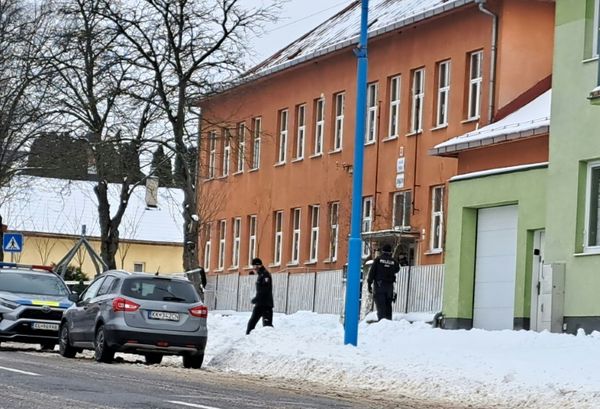
In a year already defined by an unprecedented pandemic, this week California confirmed a case of the bubonic plague—the horrific infectious disease that devastated Europe for centuries.
To be sure, this is not the start of a new calamity. Every year, there are a few hundred cases across the world—most recently in Inner Mongolia. And unlike in the past (and unlike the COVID-19 pandemic today), bubonic plague is a well-understood disease that can be effectively treated with antibiotics when it is contracted.
Still, the worry surrounding the news offers a useful opportunity to reflect on some of the lesser understood effects of disease outbreaks—now and in history.
One of those effects is that disasters like pandemics have typically led to a reduction of inequality. Rising inequality is widely regarded as the defining economic challenge of our time. Yet while today’s level of income inequality is alarming, it is hardly exceptional by historical standards. In the United States, for example, income inequality is just as high now as it was in the years leading up to the 1929 stock market crash. Going further back in history—from pharaonic Egypt to tsarist Russia, Victorian England, the Ottoman Empire, and China under the Qing dynasty—the pattern has been the same: Wealth tends to concentrate in the hands of a privileged elite.
Although inequality has been a persistent feature of civilization, it has not been constant. Long stretches of high inequality have typically been followed by bursts of violent compression, owing to cataclysmic events like wars, revolutions, natural disasters, and, yes, pandemics. At least in theory, viruses, bacteria, and germs are perfect equalizers. Whereas in a war, there are political and military hierarchies that determine the likelihood of being deployed to the battlefield and so the probability of dying in combat, killer pathogens have been blind to wealth, class, age, gender, and race.
The standard historical case in point is the bubonic plague, given the disease’s horrifying symptoms and its continuous recurrence over the last 1,500 years. Epidemics usually emanated from Africa or Asia and then spread to Europe and America with the help of globe-trotting merchants. Recurring epidemic waves lasted for decades or even centuries. But the most devastating one was, with no doubt, the Black Death. That pandemic wiped out an estimated one-third of the European population between 1347 and 1351, causing the richest 10 percent of the population to lose their grip on between 15 percent and 20 percent of overall wealth. As others have pointed out, further pandemics, revolutions, and wars have been the main cause whenever inequality has fallen since.
Yet COVID-19 looks like the great exception to the well-established historical pattern. If anything, the current pandemic is exacerbating inequality. In their attempt to flatten epidemiological curves, governments across the world have upended the livelihoods of the least advantaged. In March, the U.S. economy lost more jobs than over the entire Great Recession, with workers with less than college education taking the largest hit. To add insult to injury, in June American billionaires were 20 percent richer than at the start of the shutdown in the United States in mid-March. So why is this time different?
To understand why COVID-19 is entrenching rather than easing inequality, a look at the epidemiological features of this coronavirus and the plague is useful. The plague used to kill between 30 percent and 60 percent of those infected, targeting primarily adults in the prime of life who left behind widows and orphans. A decimated workforce created upward pressures on wages. Meanwhile, a shortage of workers implied a shortage of consumers as well, which depressed the value of land, whose output was now sold on smaller markets. Resulting higher wages for laborers and lower rents for landowners dragged down inequality.
Although cycles of plague were a common feature of life in late medieval Europe, the impact of the Black Death on the labor market was so devastating that it spelled the end of feudalism, the defining institutional system of the Middle Ages. Before the feudal system’s collapse, most of the rural population was essentially servile, owing rent and services to aristocratic landowners in exchange for the use of their land. In the wake of the Black Death, however, the shortage of labor and the abundance of land empowered peasants to the detriment of the lords.
This was especially true in the case of England. In 1351, King Edward III introduced the Statute of Labourers as a response to the labor shortage caused by the pestilence. The aim of the statute was to regulate the labor force by prohibiting requests or offers of wages higher than pre-plague standards and to limit movement in search of better conditions. But these attempts failed to dilute the negotiating power of the lower classes. Eventually, a new socioeconomic class emerged as some former peasants gradually acquired land and sold its fruits on the market for a profit.
The economic mechanism behind COVID-19 is quite different. Its case fatality ratio, which seems to be around 2 percent, is relatively low. Moreover, with older people being the most vulnerable to its most lethal effects, the size of the workforce is roughly unaffected. In turn, unlike during the plague, the recession triggered by the current health crisis has created an oversupply—not a shortage—of workers that over time will push wages down—not up. Meanwhile, social distancing measures are likely to remain in place for a while, hindering recovery in labor-intensive industries like restaurants, retail, and hotels, which will prevent the least skilled from regaining their livelihoods even when the economic recovery is in full swing. In that way, the distributive effects of the pandemic’s temporary shock to the economy risk becoming permanent.
In other words, for a pandemic to help equalize people, it requires a nearly unimaginable degree of human suffering. “Its poison is so rapid,” as recounted one plague chronicler in a 17th century book, “and it slips so subtly into the body, that it is one and the same to feel oneself affected and to see oneself placed in the tomb.” It is a mercy that the world has avoided as much this time.
However, there are some things about the current pandemic that do recall the past. During an epidemic, the poor suffer more than the rich. Killer pathogens might be blind to wealth, but wealth can erect high barriers to stem them off.
Available evidence suggests that the risk of falling seriously ill from COVID-19 in the West is higher among individuals with lower income and lower levels of education. The poorest are also more likely to suffer from the underlying health conditions (for example, diabetes, obesity, cardiovascular disease, and respiratory disease) that elevate risks of severe illness and mortality from COVID-19. Given overlapping racial and economic divides, particularly in the United States, there are racial disparities in the effects of the pandemic as well. According to APM Research Lab, Black, Indigenous, Pacific Islander, and Latino Americans all have COVID-19 death rates of roughly triple or more that of white Americans.
Equally, seven centuries ago, poorer households were more vulnerable to the plague as a result of recurrent famines that worsened their health. Large chunks of the population likely experienced severe malnutrition before the Black Death, which probably made it harder for them to fight off the disease. According to findings from ancient cemeteries, around 30 percent of wealthy English landowners likely succumbed to the plague, whereas the mortality rate for rural tenant farmers was between 40 percent and 70 percent.
Beyond their health advantages, the rich can also more easily limit exposure in other ways. Mobility data for the United States analyzed by the New York Times shows that the wealthy limited their mobility sooner and more drastically than the bottom 10 percent, thus reducing their exposure to potential infections. Meanwhile, some of the wealthiest neighborhoods in New York emptied out during the early phase of the lockdown as many who were able left for less affected areas. While millions of white-collar workers are typing on their computers from their homes or from temporary residences, essential workers like cashiers, bus drivers, and street cleaners have to show up at work.
In a similar fashion, at the time of the Black Death, anti-pestilence measures forced the poor to confine themselves in crowded and unhygienic places, thus increasing their exposure to infections, while the rich could enjoy their quarantine in large and isolated spaces. The term villeggiatura (spending time in a villa) was coined in Florence immediately after the Black Death. When a new wave of plague broke out, rich people simply withdrew from the city to a country farm and waited for the epidemic to subside. The villas of the Medici family that are spread across Tuscany’s Chianti region were built precisely for that reason. As the Italian plague chronicler Giovanni Boccaccio wrote, the very wealthiest deserted their neighborhoods altogether “as though the plague was meant to harry only those remaining within their city walls.”
As people around the world privileged enough to do so wait at home for the pandemic to be over, it is clear that COVID-19 is not going to be the next great equalizer. And in some ways, that is a good thing. No one should want to live through the Black Death. Governments should find less brutal ways to bring more fairness into society through redistributive and educational policies, and they should invest more resources in the health of the poorest while making sure that the societal value of the tasks performed by essential workers is matched with the income they generate. Only by empowering the most vulnerable can Western societies hope to bring some equality in the face of calamity.







